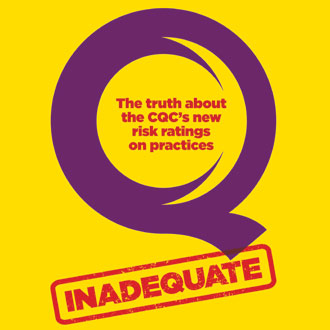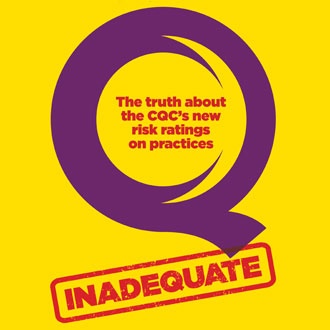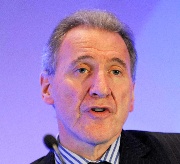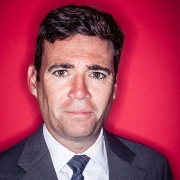GPs in shock over CQC ‘risk’ ratings


GPs found themselves battling to preserve the trust of their patients after the CQC published its internal risk rating scores for practices across the country.
The move meant 1,200 GP practices were included in the highest risk category, according to data on their prescribing, referral and diagnosis rates, even though in many cases they had yet to be inspected under the regulator’s new regime.
The national and local media seized on the scores, which banded practices from one (highest risk) to six (lowest risk), as yet more evidence that GPs were providing poor care. The Daily Mail went with a headline of ‘GP surgeries: one in six is failing’.
But Pulse has learned that the GPC warned the CQC in advance not to publish the ratings as they do not correlate with the quality of care provided and many of the 38 measures the regulator uses are outside of GPs’ control.
A number of practices ranked in band one told Pulse that they had passed recent CQC inspections with no problems – and even the regulator itself admitted that the scores could not be used to determine the performance at GP practices.
But the damage has been done. Dr Peter Swinyard, chair of the Family Doctor Association and a GP in Swindon, Wiltshire, says he was shocked to be placed in the second-highest risk category (band two).
His practice had evidence of an ‘elevated risk’ because of a lower-than-average uptake of cervical cancer testing and a lack of evidence of regular meetings to discuss palliative care.
He says: ‘We had meetings, we just didn’t write it down. And anyway, we didn’t have any palliative care patients within that time period so there wasn’t much to discuss.

‘It is very demoralising to be ranked badly’
Dr Peter Swinyard, chair of the Family Doctor Association
‘It is very demoralising to be ranked badly for something when you have tried very hard. We cannot get many of our non-English-speaking patients to come in for their smear tests. They are saying no, and patients have a right to say no.’
Dr Swinyard adds that the ratings have made him think about calling time on a 30-year career: ‘It should have been kept confidential. These arbitrary indicators have been taken completely out of context. The whole thing is just complete nonsense.’
Patients’ confidence
Dr Christopher North, a GP in Marlow, Buckinghamshire, has been forced to write an explanatory letter to all patients after his practice was placed in band one, despite passing all aspects of its CQC inspection in the spring.
He says: ‘We now have this slur put against a hard-working practice. It reflects on my staff, my colleagues, and it is almost impossible to remove that slur without another inspection.’
He agrees that the CQC should not have published these data: ‘I have no problem with the process of banding itself. I agree that the CQC has to try to prioritise its work somehow. But publishing it, in the way that they have, using words like “risk”, and “elevated risk”, has meant that people have interpreted it in a bizarre way.’
One LMC leader told Pulse that in his area, a university practice has been placed in band one. One reason for the high risk score was that it had not diagnosed enough patients with chronic obstructive pulmonary disease (COPD) – mainly because most of its patients are student age.
Dr Gaurav Gupta, vice-chair of Kent LMC and a GP in Faversham, says: ‘This is shocking and it proves that when you have a list like this without proper information or context it can be misinterpreted by the media or by the public. It can cause irreparable damage to practices and to the professionals who are working there.
‘All this does is put more pressure on staff providing services at the front. These kind of comments are not helpful, either to the professionals or the patients. I think the practices that have been named will be put under unnecessary scrutiny by the media and public while they might actually be providing absolutely safe and sound care to their patients.’
Dr Siraj Shah found his practice in Gravesend, Kent, was rated in band one after opting out of QOF for a year. He says: ‘We started major renovation works in May 2013, which meant we had only one consulting room for one year, so we decided that we were not going to do this tick-box exercise of the QOF.
‘We still provided the essential services to our patients. It doesn’t mean that we neglected chronic disease management, but we were not able to put in the data, so this is not really a reflection of our care.’
His practice had a CQC inspection report published just days earlier, confirming all the regulator’s required standards had been met, and he says that he feels ‘disheartened’ that his patients will now have the impression the practice is ‘risky’.
He says: ‘They should not have put it in the public domain. What happens to my patients who access it? They see “Oh, Dr Shah is hopeless in his care”, but that is not true. This is bringing practices into disrepute.’
Warnings
This is not the first time the CQC has got into trouble with the GP profession for stirring up bad press. Last year, it caused fury when chief inspector of primary care Professor Steve Field highlighted a practice with ‘maggots in treatment rooms’ – a claim dismissed by the practice in question – in his report on the first 1,000 CQC inspections.
Professor Field also recently said that up to 200 GP practices could be closed under the new CQC inspection regime.

‘A lot of these indicators are either outside of a practice’s control or aren’t actually an indicator of quality general practice’
Dr Robert Morley, chair of the GPC’s contracts and regulations subcommittee
Pulse has learned that the CQC was warned that the risk ratings were unreliable and would cause damage to practices if they were published. Dr Robert Morley, chair of the GPC’s contracts and regulations subcommittee, says the GPC spoke to the CQC before they were published to advise them it was a bad idea.
He says: ‘I mean it was entirely predictable that once this came into the public domain, particular elements of the press would use it to rate practices – just as we have seen in the headlines.’
He adds that many of the indicators – such as those looking at the number of diagnoses, emergency admissions and prescribing rates – penalise practices for factors outside of their control.
Dr Morley says: ‘A lot of these indicators are either outside of a practice’s control or aren’t actually an indicator of quality general practice, because they relate to secondary care factors, demographic factors, geographical factors and availability and quality of local secondary care services.
‘So all sorts of issues are taken out of context and don’t give an indication of practice quality at all.’

‘It could demoralise an already-shattered profession’
Shadow health secretary Andy Burnham
Shadow health secretary Andy Burnham was also critical, telling Pulse the CQC ‘could demoralise an already-shattered profession’ and warning care would be destabilised by patients opting to re-register elsewhere, even though these practices might not have been inspected.
He says: ‘To put information out about services without alarming the public, you have to have real solid evidence which is worked through with the profession. It was meant to help the public, and they’ve gone about it in the wrong way.’
The CQC has defended its actions, saying: ‘At all times, we have been clear that the intelligent monitoring bandings are not the CQC’s judgment of services – this only happens once we have carried out inspections. The intelligence packs are used for discussion with general practices during our inspections. The bandings are not judgments.’
But asked by Pulse if the CQC was planning on asking newspapers to correct any misleading information, the spokesperson says: ‘May I suggest that you refer to what we have actually published rather than the subsequent coverage that we cannot control?
‘As an independent, open and transparent organisation, it is our duty to be honest and clear about what our analysis of the evidence suggests and how we will use it. This should reassure the public that we are a responsive regulator and we would expect providers to be interested to know what we have found and how we will use it.’
But the CQC’s data have been adapted by ministers to further their transparency agenda, with the scores forming the basis of the GP rankings on the Department of Health’s new comparison website.
The MyNHS site – hosted on NHS Choices – was launched last month by health secretary Jeremy Hunt and currently links to the CQC’s risk ratings for GPs.
Pulse has learned that the CQC scores will be placed on this site in full by December, so patients are able to compare practices using them, in what Mr Hunt calls a ‘transition to a more transparent learning culture’. ‘How good is the diabetes care at my local surgery? MyNHS will tell you,’ Mr Hunt said in his announcement.
Eventually, following an inspection, the MyNHS site will show colour-coded ratings for all 42 CQC requirements for each GP practice.
But, until then, the flawed risk ratings will provide the comparable data for patients. Dr North says he is very angry about the move: ‘It is all very well to base their inspections on this, but who gave them permission to put red flags against our NHS Choices information?
‘That is beyond transparency, that is just bullying. Actually, this is bullying people who can’t fight back.’
What are the risk ratings about?
- Every GP practice in England has been categorised into one of six bands, with band one representing the highest and band six the lowest priority for inspection.
- The CQC uses 38 indicators for all GP practices to determine the band, including QOF data, patient survey data and prescribing and hospital episode statistics. They include dementia diagnosis rates, flu vaccination rates, avoidable emergency admissions and the proportion of patients who said they could see their preferred GP.
- The CQC stresses the ‘intelligent monitoring’ ratings are only a ‘guide to where we may need to look in more depth’ and are not designed to measure performance. They ‘should prompt NHS GP practices to ask questions, reflect and (if appropriate) take action in respect of their own performance in relation to others’.
Source: CQC’s Intelligent Monitoring of NHS GP practices, Indicators and methodology, November 2014.
Fighting back against a bad rating

What is the GPC doing about this?
The GPC is writing directly to the CQC about this and wider concerns that GPs continue to raise. It has also spoken directly to senior members of the CQC about the anger GPs feel about this.
How can affected practices do?
Submit a complaint. Write to: Care Quality Commission, Citygate, Gallowgate, Newcastle upon Tyne, NE1 4PA. Email: [email protected]; phone 03000 616161
What is the best way of informing patients?
Publish a note on your website reassuring patients. Explain that this is not a performance judgment and is not based on a CQC inspection. The local LMC can help.
What can practices do about adverse publicity?
It is important that local GPs respond to adverse articles in the local press to put the facts straight. The GPC is already working with local GPs to facilitate this, but that should not stop as many others as possible from responding too.
Dr Richard Vautrey is deputy chair of the GPC.
Pulse October survey
Take our July 2025 survey to potentially win £1.000 worth of tokens










